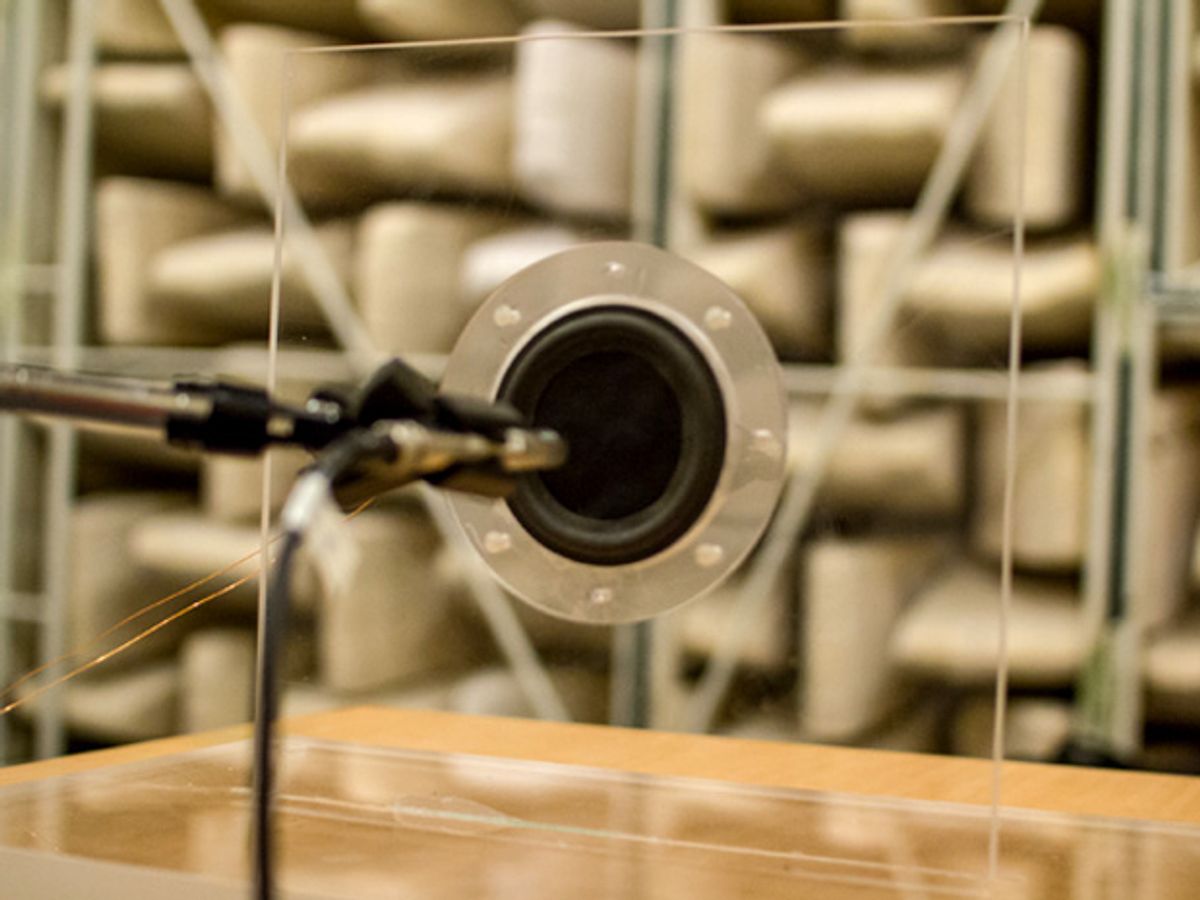While technological developments in personal computing always seem to be eagerly received, it seems that developments in our personal entertainment—like TVs and stereos—get us most excited.
Along these lines, there is now a completely new way to build loudspeakers thanks in large part to nanoparticles. Researchers at Sweden’s KTH Royal Institute of Technology have found a way to eliminate the need for a permanent magnet in stereo speakers by adding metallic nanoparticles to a speaker's membrane.
“This is, to our knowledge, the first reported magnetic speaker membrane,” said Richard Olsson, a KTH researcher, in a press release.
The design of the speaker, which is detailed in the journal of the Royal Society of Chemistry (“Cellulose nanofibers decorated with magnetic nanoparticles--synthesis, structure and use in magnetized high toughness membranes for a prototype loudspeaker”) employs cellulose nanofibers that have had ferrite nanoparticles dispersed evenly throughout the membrane.
The result is a speaker that does not need a permanent magnet to drive the membrane and yet produces a sound quality the researchers argue is as good as, if not better than, traditional speaker designs because of the even distribution of forces within the membrane.
In traditional speaker designs, a voice coil is wrapped around a permanent magnet. The voice coil drives the speaker cone’s movements, which produces the sounds that we hear.
In the speaker design resulting from this latest advance, there is still a voice coil but it is obviously not wrapped around a permanent magnet nor is it directly attached to the cone. Instead, sound is produced solely by the movement of air.
This isn't the first time that nanotechnology has been offered as a possible solution to loudspeaker design. Five years ago, researchers in China demonstrated how carbon nanotubes could be used to create a transparent loudspeaker film. I have not heard whether anything ultimately ever came of that research.
But if KTH's new speaker technology doesn’t get off the ground, the researchers believe that it has alternative applications in sound cancellation and in one of our other favorite technologies: the automobile.
“We want to look at applications for the material that are driven by magnetic fields. It may, for example, be a form of active damping for cars and trains,” says Olsson in the press release.
Photo: Richard Anderssson
Dexter Johnson is a contributing editor at IEEE Spectrum, with a focus on nanotechnology.



